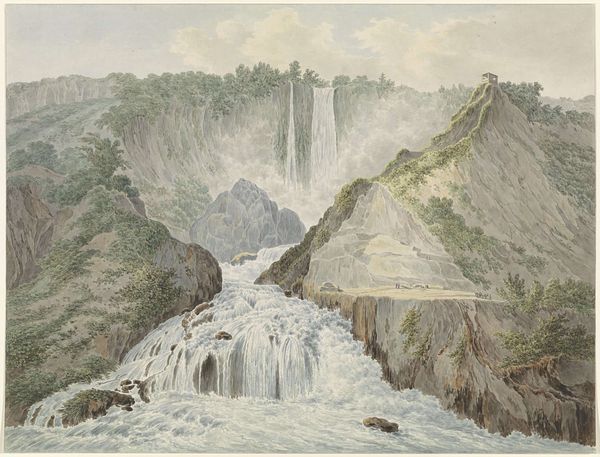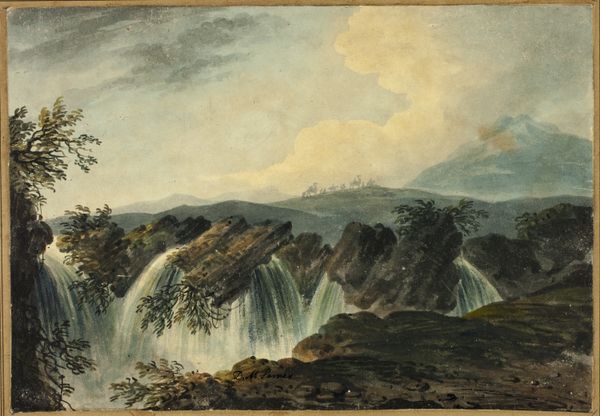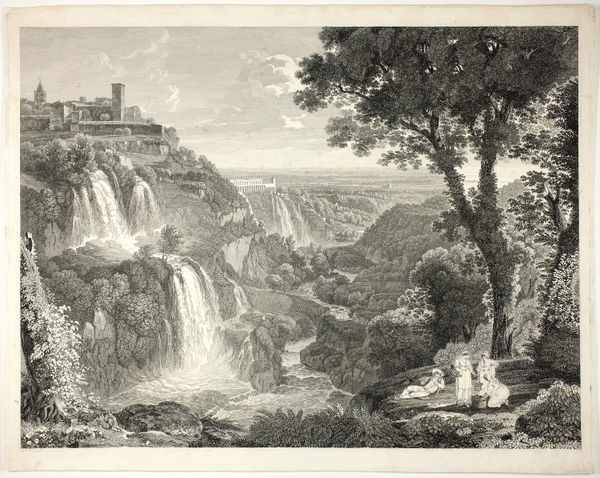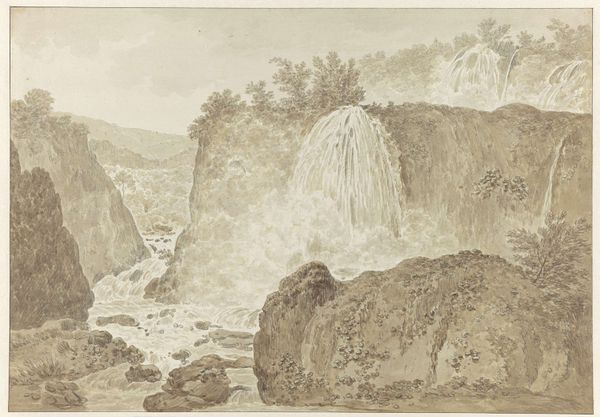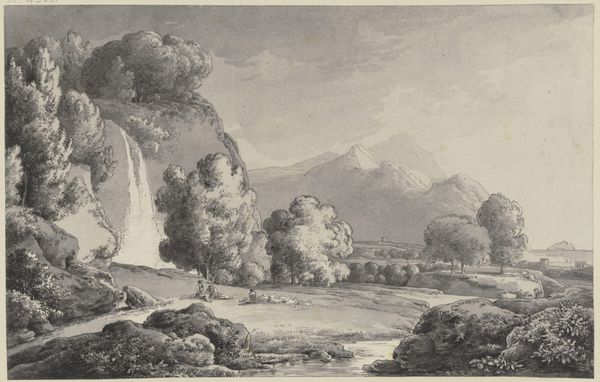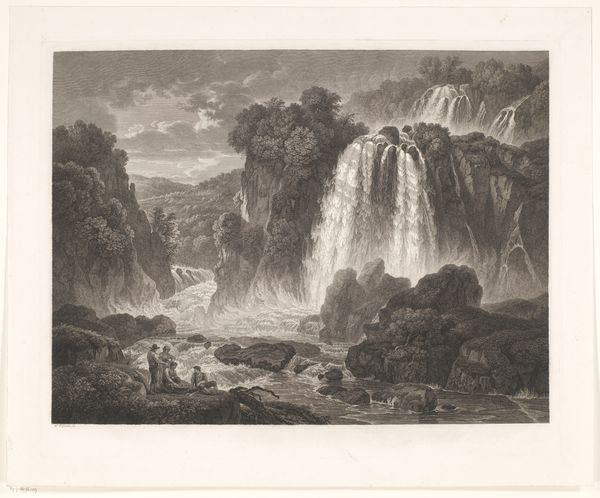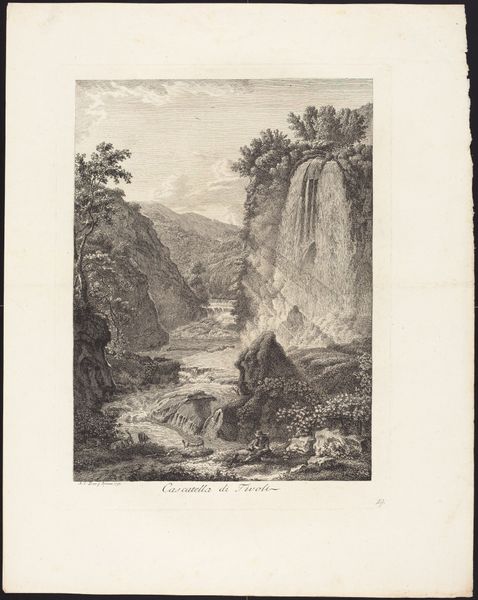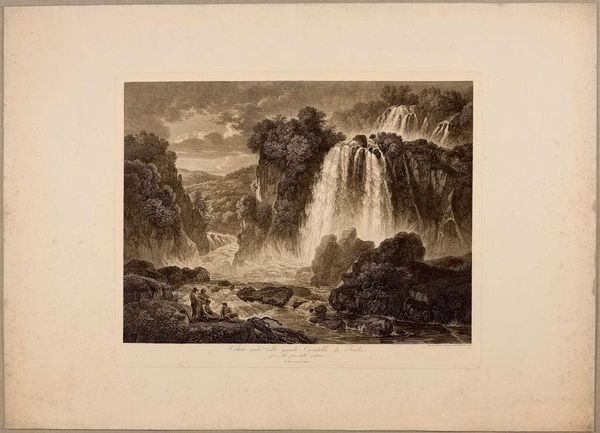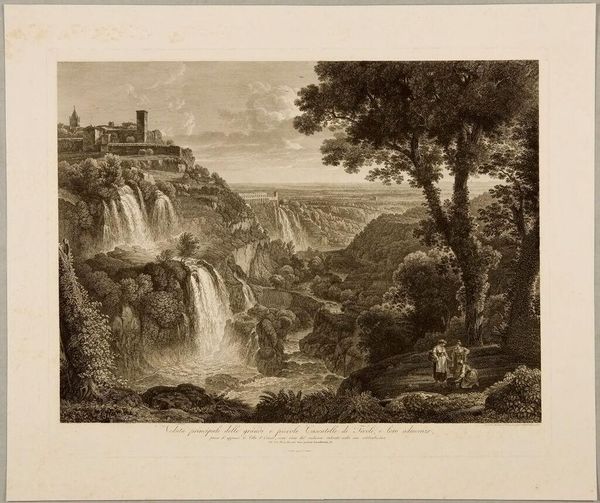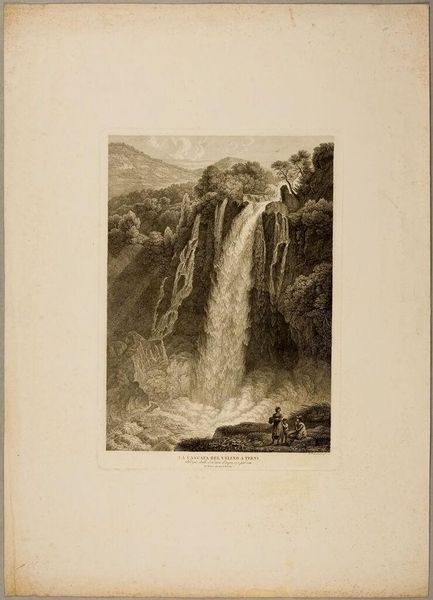
plein-air, watercolor
#
plein-air
#
landscape
#
watercolor
#
romanticism
#
watercolour illustration
#
watercolor
Dimensions: height 405 mm, width 535 mm
Copyright: Rijks Museum: Open Domain
Curator: Before us we have Daniël Dupré’s “View of the Waterfalls of Tivoli,” likely created between 1761 and 1817. Dupré worked *en plein air* on paper with watercolors. Editor: It has a sublime, ethereal quality. The rushing water is powerful, yet the overall impression is soft, almost dreamlike. It reminds me of Romantic ideals about the power of nature. Curator: Yes, but I'm equally drawn to its materiality. Look closely. See how the artist renders the cascading water, using thin washes and letting the paper peek through. What’s really remarkable is how he captured so much detail, on site, a challenge without modern technologies. Editor: Definitely. And viewing this landscape through the lens of Romanticism we see the rise of individual subjectivity reflected through nature, but also colonial dynamics: picturesque tourism became popular and images like these reinforced Europe’s centrality as a cultural touchstone, idealizing landscapes against complex socio-political realities. Curator: Right, let’s remember Dupré, even working directly *en plein air*, was certainly part of a specific social class engaging in tourism and leisure made possible through particular economic arrangements. The watercolor medium, light and easily transported, facilitated that access to both see and depict these views. The brushstrokes also contribute – controlled and precise, reflective of artistic training and refinement. Editor: Precisely. We must contextualize the beauty with the historical backdrop. How accessible was such scenery? To whom? Waterfalls weren't just picturesque elements, they provided water to specific people, determined geopolitical realities. Curator: Absolutely, the choice of medium, the plein air style – these reflect a cultural and economic landscape in which the artistic practice was rooted. Editor: Understanding all the undercurrents surely enriches one’s observation. This landscape, with all its beautiful details, echoes of Romanticism, isn’t only an escape but a record embedded in the complicated relations of the time. Curator: Yes. It shows that even images of idyllic nature are inevitably shaped by specific conditions of production.
Comments
No comments
Be the first to comment and join the conversation on the ultimate creative platform.
